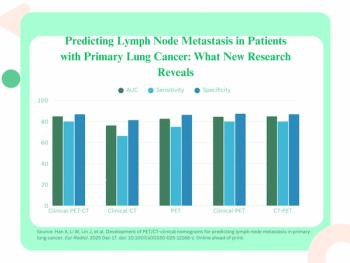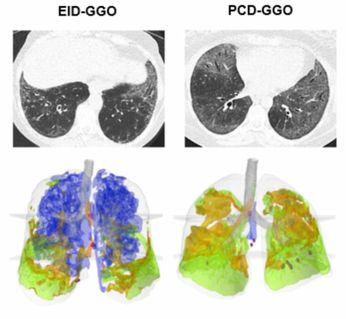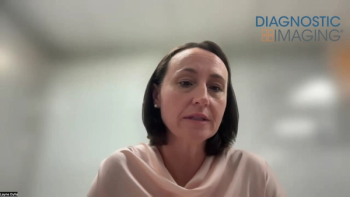
COPD Can’t Hide from CT
Computed tomography (CT) scans beat traditional spirometry in identifying lung damage associated with flare-ups of chronic obstructive pulmonary disease, or COPD, a study published online in the journal Radiology concludes.
Computed tomography (CT) scans beat traditional spirometry in identifying lung damage associated with flare-ups of chronic obstructive pulmonary disease, or COPD,
COPD can damage both the airways and the air sacs of the lungs, and is a leading cause of death and illness worldwide. The two main structural abnormalities seen in COPD are emphysema, in which the air sacs of the lung are gradually destroyed, and airway disease, which causes a narrowing of the bronchial tubes. According to the National Heart, Lung and Blood Institute (NHLBI), an estimated $49.9 billion was spent on COPD in the United States in 2010, the majority of which was related to exacerbations, or episodes when symptoms suddenly worsen.
A team led by radiologist MeiLan K. Han, MD, MS, of the University of Michigan, assessed CT scans from the first 2,500 patients enrolled in the NHLBI’s COPD Gene Study who met criteria for COPD. They focused on possible links between the thickness of a patient’s bronchial walls, the degree of air sac destruction and the frequency of exacerbations.
They found while many patients had a mixture of structural changes related to their
COPD is currently staged by measuring lung function with a
“Spirometry is inadequate as the sole parameter for assessing risk of exacerbations,” Han said. “Two COPD patients may be identical in terms of lung function yet behave very differently. For instance, there are subsets of patients with severely reduced lung function who do not experience frequent exacerbations.”
She added that the CT scans could be helpful in selecting more homogenous groups for clinical trials and, possibly, for identifying patients at risk of frequent exacerbations. Such patients could then receive medical therapies targeted to their type of COPD.
Newsletter
Stay at the forefront of radiology with the Diagnostic Imaging newsletter, delivering the latest news, clinical insights, and imaging advancements for today’s radiologists.



























